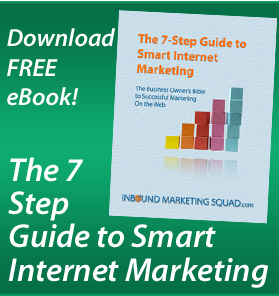Coming up with marketing strategies is relatively easy. They're a dime a dozen. Just read or watch any marketing book, article, video, etc. They're not hard to find or learn about. What's hard is choosing which marketing strategies will work well for your business.
Before I share with you 5 tips to help you make those choices, let's define what a marketing strategy is.
I think of a marketing strategy as a filter. It's a way of focusing your attention and allocating limited resources on the specific marketing methods to help you achieve a desired goal in the most cost- effective and efficient way.
A marketing strategy acts as a filter because it helps screen out all the other options that come banging on your door, distracting your attention from how you've chosen to reach your goal. Distractions can range from the latest and greatest widget you should sell or a competitor's advertising campaign to a "once in a lifetime" speaking opportunity (among thousands of others). So you may ask yourself, should I: chase after social media, redo my website, lower prices, increase discounts, offer a free trial, add more channel partners?
Well, whaddaya you do? All of them? Some of them? None of them? Flip a coin?
"Couldn't some of these "distractions" be the right thing to do?" you ask. Absolutely they could! The world will always be filled with endless possibilities. Sometimes you need to shift course, be nimble. But in the end, you want to focus on the most effective marketing strategies that help you achieve your desired goal.
With all of that in mind ... let's start with an example: competitive yacht racing.
Crossing the Finish Line First
Here's a diagram of a classic yacht racing course. The Race Committee determines the course design and direction, sets out the marks, starts the race, enforces the rules and determines the winner.
 Whichever yacht's bow crosses the finish line first is usually declared the winner.
Whichever yacht's bow crosses the finish line first is usually declared the winner.
The sailors know where the race starts and ends, what marks they have to go around and what the rules of engagement are. When the race starts, the wind is coming from a specific direction at a certain speed — as are the tides and currents.
But as the race progresses, the wind, currents and tide shift — often changing direction and becoming stronger or weaker.
If you know the waters where the race is being run, you have a pretty good idea of the typical timing, directions and intensity of these changes. But sometimes Mama Nature can surprise you and then you're scrambling to improvise, drawing upon your experience, knowledge, the conditions, and your resources to help you win the race.
Sailors use many different strategies to get around the course, depending upon the water and weather conditions, their yacht's equipment, tolerances and capacities, as well as their crew's strengths and weaknesses. If you've been following the America's Cup, you've got a good idea of what the yachts, skippers and their crews are capable of.
The Race Committee deliberately chooses to set the course so that when the race starts, you have to sail directly into the wind. If you've ever been on a sailing yacht, you know that you can't sail directly into the wind. Whenever you try, you're not only dead in the water, you can even be pushed backward.
So how do you sail into the wind? How do you get around that first mark? You do it by tacking back and forth. You sail slightly off the wind. Your yacht aims slightly to the left or right from the wind. Just off enough so you're headed in the right direction with enough wind to fill your sails and make your yacht pick up speed. At such angles, the wind is pushing against the sails and the yacht moves forward because the keel that sticks out underneath the yacht keeps it from being pushed sideways. The keel is crucial to a yacht's ability to maneuver under sail.
Once you get around the first mark, now you've changed direction by about 45 degrees. You're sailing with the wind behind/over your shoulder. It's a lot easier going for you. But that means it's also a lot easier for other yachts too. And at this angle to the wind, it makes it a lot easier to have someone pass you or slow you down.
The competition becomes even fiercer with each yacht trying to take the lead. Competitors can take away your speed by staying far enough behind you to have the wind hit their sails first yet be close enough that the wind doesn't fill your sails. The race is a constant battle — tacking back and forth, maneuvering to keep your air clear or to pick up more speed.
After you've come around the last (or third) mark, you've either left everyone in the dust, or the competition is more intense than ever. As you speed for the finish line, you're once again heading into the wind, battling for the best position (aka lay line) to cross the finish line with the least amount of tacking.
You see, regardless of which leg of the course you're on, the more often you tack, the more time and distance you have to make up. Each time you tack, you lose momentum because it takes time to get your sails into their new proper positions, for the wind to fill them and for your yacht to pick up speed moving through the water. And you can't change that dynamic. Physics, after all, is physics.
What does all of this have to do with marketing strategies?
Think of the water where your race course is located as your total available market. It has certain features and characteristics you cannot change — much like the tides and currents (think: economy, politics) and how many sailboats (competitors) are out there.
Think of the Race Committee and the rule book as the federal / state / local laws that allow you to operate in the market.
The principles of physics govern how a sailing yacht is able to move on the water. Similarly, the psychology of decision-making shows us how people make choices.
Your yacht and crew are your company and employees — all the equipment, technologies, assets, liabilities, talents, strengths, weaknesses, knowledge and capabilities you have at hand to cross the finish line.
Then there's the wind. The wind is the most capricious. It's buyer demand.
And last, but not least, there's your boat's keel. That's your brand's promise.
So until my next post, when I'll get into the 5 tips to help you choose the best marketing strategies for your business, ask yourself:
If you were the skipper of a yacht in the America's Cup, and you HAD to cross that finish line first, what 5 things would you need to be successful and why?
Related Posts:
- Branding for Small Businesses - Why You Should Care
- Business Owners: Increase Your Brand's Value and Reap the Rewards
- How Positioning Your Brand Keeps Your Business Focused and On Track







